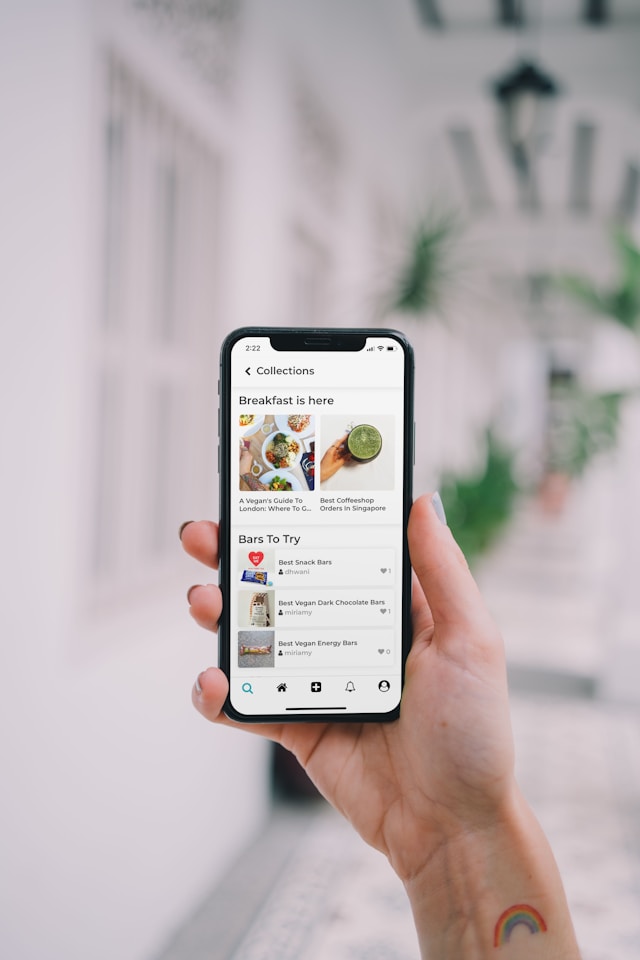You might have heard the old adage, “The customer is always right.” Whether you agree with that sentiment or not, the fact remains that you need to impress your customers. Otherwise, they won’t stick around. According to research, the cost of acquiring a new customer can be up to 5x higher than retaining existing customers. In other words, customer satisfaction pays. Fortunately, you can measure how likely they are to stay through a customer satisfaction survey.
The right user research can tell you what’s working, what’s not, and even how to improve. Here’s everything you need to know about customer satisfaction surveys for digital products

What Is a Customer Satisfaction Survey?
There are a few types of customer satisfaction surveys, which is why it’s important to understand the definition. Broadly, it refers to any customer survey that tries to find out about their satisfaction levels with a particular product.
This can be a follow-up phone call following an interaction with a customer service representative. It can also take many other forms. However, in UX it usually entails an online survey that gauges customer satisfaction with how a digital product works.
Questions can vary from open-ended questions that aim to gather extensive feedback to number-based surveys. For example, you might ask, “How satisfied are you with the product?” Customers can rate their feelings on a scale of one (very dissatisfied) to five (very satisfied).
Either way, these surveys aim to track where you’re creating happy customers and where there’s room for improvement.
Why Is It Important To Send a Customer Satisfaction Survey Form?
If you have a digital product, you should consider sending a customer satisfaction survey form to your users. It’s a fantastic way to measure product quality and determine the value of your product.
Here are seven reasons to send a survey.
1. Helps You Evaluate and Improve Features
You might think it would be great to send a survey and get only good feedback. That way, you know you’ve got a huge base of satisfied customers.
However, there’s always room for improvement. Knowing where to focus your efforts can be a huge help regarding resource allocation. Plus, you might even get an idea of how to improve it.
2. Identifies Pain Points
You probably set out to create a digital product to solve a pain point. However, your job doesn’t stop after launch. There could be new ways to solve the same pain point, or your audience might develop new ones. Sometimes, your product might be the cause.
Users can identify what’s going wrong, leaving you to fix it.
3. Assesses Customer Satisfaction
Of course, above all else, you can assess how satisfied your customers are. You can find out if you’re meeting customer expectations, and if the feedback is good, it’s morale-boosting for the team.
By aiming for high satisfaction levels, you can also reduce customer churn.
4. Evaluates Customer Loyalty
As we mentioned in the intro, loyalty is important. You can assess customer loyalty through some types of customer surveys. As a result, you can focus on enhancing those retention metrics. Never underestimate the value of a loyal customer!
5. Helps With User Journey Mapping
Mapping the customer journey is an important part of the UX design process. But did you know that customer surveys can provide insights about this process?
By sending surveys at different touchpoints, you can gain insights about different stages of this journey. That way, you can find out exactly where you’re going wrong.
6. Provides Guidance During Major Transitions or Updates
UX is iterative, which means you often need to update and change your product. Knowing the overall customer sentiment can be really helpful when it comes time to update. Plus, it can be helpful for deciding what to update and when.
7. Fosters Continuous Improvement
In a similar vein, gathering feedback can prompt you to keep improving. Regular customer surveys help you to create a feedback loop that constantly tracks customer satisfaction. As a result, you can make continuous improvements that keep product usage high.

How to Create a Customer Satisfaction Survey
There are different types of surveys. However, here are the basic steps if you want to know how to create a customer satisfaction survey.
1. Set Expectations
Firstly, you need to set your own expectations. You can’t find out everything from everyone all at once. So, make sure you define what it is you want to know.
Do you want to find out about customer loyalty or customer satisfaction with a particular feature? Knowing this will help you design a survey that targets these goals.
Speaking of goals, you should also outline some of your other goals. For example, think about the response rates you want to collect and set a threshold for customer satisfaction.
2. Define Your Target Audience
Next, you need to define your audience. Who are you going to ask? You can try to ask your entire customer base, but you might not get the key results you’re looking for. Instead, you can section your audience and be more specific. For example, target users at different stages of the customer lifecycle. Or, segment them in a different way and ask more demographic questions.
By doing this, you can ask customer satisfaction survey questions that are truly relevant. Plus, you’re more likely to get answers.
Pro Tip: You can also segment based on those who have answered questions before. Ask a follow-up question to get more information.
3. Create the Questions
Then, it’s time to write the questions themselves. At this stage, you can figure out what type of survey to do and craft the right questions. Remember to focus on open, unbiased questions that get to the heart of the research question.
For example, don’t say, “Tell us how your customer service experience was good.” This is a leading question that assumes the user had a good experience. Instead, ask, “How was your customer service experience?”
4. Set the Question Order
You also need to think carefully about the order in which the questions appear. Otherwise, the survey may be subject to order bias. For example, let’s say you ask a question about a certain feature. If you follow this up with “Tell us about your favorite feature,” users are more likely to pick that feature.
Try to make sure your questions follow a logical order.
5. Design Your Survey
As a UX/UI designer, you shouldn’t overlook the design of your survey. Ensure the UX is easy to follow, and the UI is clean.
For example, is it easy to click ‘submit’ at the end of the survey? Can users see how to exit the survey if they want to? These are all important things to consider.
6. Test
You also need to run some usability tests for your survey. You can test it on colleagues (those not involved in designing the survey). Or, you can use a small subsection of your target audience.
Don’t be afraid to make improvements before sending it out.
7. Analyze
Carrying out surveys is pointless if you don’t utilize the data. There may be different ways to analyze the data depending on how you collect it. For example, with numerical data, you can calculate averages. However, for qualitative data, you might need to create empathy maps.
8. Complete the Feedback Loop
After analyzing the data, you need to take action. Make sure you categorize and compile the data to keep on file. After that, distribute it among the team and hold meetings to decide what to do about it.
There’s no point just sitting on the data. Instead, you need to figure out the best solution to address the problems.

Customer Satisfaction Survey Examples
When creating your survey, it can be helpful to check out some inspiration. Here are four customer satisfaction survey examples and what we like about them.
1. X (Formerly Twitter)—Make It Quick
Social media platform X, formerly Twitter, makes a point of conducting regular surveys. However, it doesn’t send them out as emails or push notifications. Instead, the app uses in-line surveys that slot in among the posts in a user’s feed. It makes use of the app’s poll feature to ask just one question.
Customer satisfaction surveys don’t always have to be lengthy. In fact, long surveys can prevent users from doing them. Your customers are often busy! Here are some tips for condensing your survey:
- Limit your survey to 5-10 questions.
- Use brief, clear language.
- Test the survey to get feedback on the length.
By the way, if you have an engaged online community, you can make use of social media polls, too. These aren’t an official survey and they may provide less data. However, it can tell you how engaged your audience is, and it can help you answer some basic questions.
2. Skype—Staying Relevant
The telecommunication platform Skype is great at feedback. In fact, it asks its users for feedback after every call. Namely, it asks about the quality of the call in just three questions. As we mentioned above, the shorter, the better. Plus, with multiple-choice questions, the survey is extremely quick to complete.
What’s even better about Skype’s survey is that it focuses solely on the product. It asks about “audio issues” and “video issues”. These are the two main functions of the platform.
You can learn from Skype by keeping your questions highly relevant. Targeted product performance questions can really help you improve your offerings, leading to better retention.
Even if you stray away from product performance, you should make sure your survey is highly relevant. Here’s how you can keep your survey relevant:
- Hone in on a target audience and write your questions for them.
- Avoid generic questions.
- Ask about specific user experiences that align with your goals.
- Provide a ‘not applicable/don’t know’ option for all closed questions.
3. Hilton Hotels—Ensuring Accessibility
If your survey isn’t accessible, then it’s not helpful. Hilton Hotels is a fantastic example of an accessible survey that gets the job done. Although this isn’t an example of a digital product customer survey, it’s still an example you can learn from.
Following a stay at the hotel, customers receive a one-page survey. It’s optional, which means customers don’t have to fill it out. Remember, your users are busy, so forcing them into a survey can cause frustration.
Plus, the questions are simple. There’s a mixture of question types, some of which are multiple-choice. Then, the customer can expand on their answers if they wish; again, it’s optional.
Furthermore, the survey exists on a public URL that guests can access without having to go through barriers. As a result, it’s highly accessible.
Providing this accessibility ensures you get a wide range of answers. As a result, your data will be more comprehensive. Consider designing a survey with everyone in mind, including those with reduced abilities. Here are some tips:
- Test the survey’s accessibility features.
- Avoid complex layouts and language.
- Ensure your survey has adequate color contrast and easy-to-read fonts.
- Provide alternative text for any images.
- Make it possible for users to navigate the survey using the keyboard.
4. Airbnb—Add Your Branding
Airbnb is a platform that allows customers to book overnight stays across the world. There are two core user bases: those booking a stay and those hosting them. Both rely, to an extent, on the feedback of the other group. As a result, it’s crucial to prompt users to leave reviews.
Technically, this isn’t a customer satisfaction survey. However, Airbnb can still use the data collected to determine how happy its users are. Plus, it’s still an example of a great survey.
Airbnb uses a brightly-colored, eye-catching button to prompt users to take the survey. Of course, it also uses its brand colors for this. During this, Airbnb always asks why users chose this platform over competitors. It’s in-depth but not mandatory.
What Airbnb does great is incorporate its branding into the survey. This is through color and font but also through its polite and friendly language.
Here’s how to add branding to your surveys:
- Use brand colors and imagery throughout the survey.
- Create a cohesive user experience with a button that invites users to take the survey.
- Incorporate branding elements strategically, such as using colors for the action button.
- Align your language with your brand messaging.

Customer Satisfaction Survey Email Template
Ideally, you should create your own unique survey, just like Airbnb. That way, it helps your audience understand who it’s coming from. However, customer satisfaction survey templates can be a great source of inspiration.
Here’s a customer satisfaction survey email template to get you started.
Hello [Recipient’s Name],
Thanks for being a user of [digital product]. We hope your experience with our [website/app/software] has been nothing short of exceptional.
We always want to enhance our product. So, we would love to hear your thoughts on how it has performed for you after [X days/weeks/months].
Please take a moment to share your feedback by selecting the statement that best aligns with your experience:
[Extremely Dissatisfied/Somewhat Dissatisfied/Neither Satisfied or Dissatisfied/Somewhat Satisfied/Extremely Satisfied]
Your insights are incredibly valuable in helping us improve [product name].
Thank you for your time.
Best regards,
[Employee’s Name], [Position] at [Company Name]
Alternatively, you can insert a link to your survey and encourage the receiver to open it.
Should You Use Other UX Research Tools?
While customer satisfaction surveys are valuable for gauging user experiences, you can also supplement them with other techniques.
For example, you can use A/B tests to highlight user behaviors. While this can only take you so far, you can use surveys to supplement the data with qualitative feedback.
You can go even further in-depth with user interviews and contextual inquiries. These can help you empathize with your users. However, they are more time-consuming and costly.
Often, it helps to employ UX research tools to collate everything gained from different research methods.

Get More UX Tips With Page Flows
The customer satisfaction survey is a great way to learn more about your users. However, it’s not the only way to improve your UX.
If you’re looking for design inspiration, why not learn from proven products? Page Flows is a helpful resource for finding UX design ideas. Get started today to access our growing library of user flow recordings and finally stay up-to-date with current design trends.





